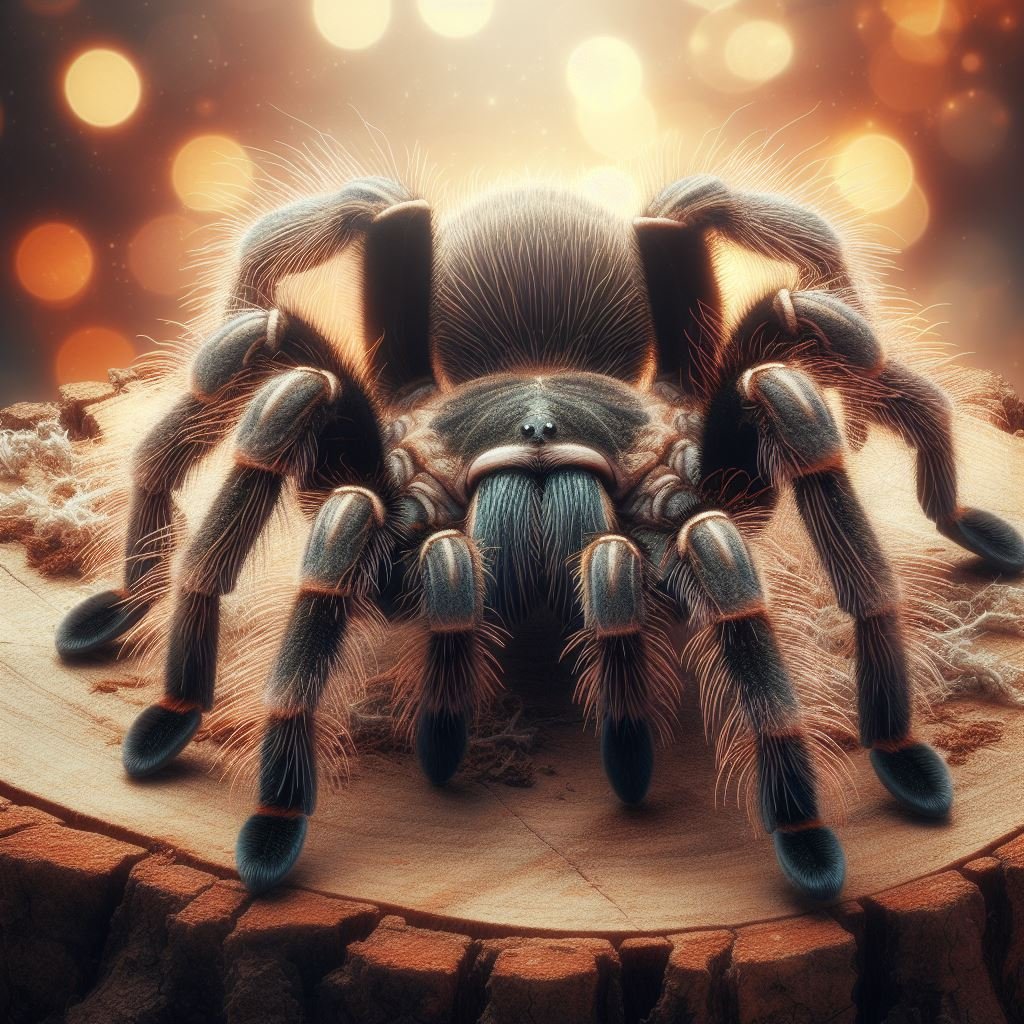Spiders: the eight-legged denizens of our basements, the elicitors of shrieks and shivers, the misunderstood masters of pest control. But for a growing number of adventurous souls, spiders are more than creepy crawlies – they’re fascinating companions, low-maintenance marvels, and surprisingly endearing additions to the family. If you’re considering welcoming a spider into your home, Pet Spider 101: Everything You Need to Know About Arachnid Adoption is your ultimate guide. We’ll debunk myths, navigate legalities, and equip you with the knowledge to confidently care for your new eight-legged friend.
First Things First: Why Choose a Spider?
Before we delve into enclosures and feeding schedules, let’s address the elephant in the room (or rather, the spider on the wall). Why choose a spider over a more conventional furry or feathered friend? Here are just a few reasons:
- Low-maintenance marvels: Unlike furry friends who require walks and playtime, spiders are perfectly content in their meticulously crafted enclosures. They’re quiet, clean, and require minimal interaction, making them ideal for busy lifestyles or apartment living.
- Natural pest control: Forget sticky traps and chemical sprays! Spiders are nature’s born bug zappers, efficiently eliminating unwanted insects in your home. No more buzzing mosquitos or scurrying roaches – your spider will handle it!
- Conversation starters: Prepare for amazed looks and endless questions when you introduce your pet tarantula or jumping spider. These unique creatures are guaranteed to spark curiosity and conversation, making you the local arachnid expert.
- Unexpectedly endearing: Don’t underestimate the charm of a spider. Watching them meticulously spin webs, stalk prey, or molt their exoskeletons is surprisingly captivating. You might just find yourself developing a soft spot for your eight-legged friend.
Mythbusting: Dispelling Spider Stereotypes
Before we dive into the practicalities of spider ownership, let’s address some common misconceptions:
- Myth: All spiders are venomous and dangerous.
- Fact: While most spiders are venomous, only a handful pose any threat to humans. In most cases, their venom is weaker than that of a bee sting.
- Myth: Spiders are aggressive and bite readily.
- Fact: Spiders are generally shy creatures and prefer to flee than fight. Bites are extremely rare and usually only occur when a spider feels cornered or threatened.
- Myth: Keeping spiders is creepy and unsanitary.
- Fact: Spiders are clean creatures and their enclosures are easy to maintain with regular spot cleaning. In fact, they can contribute to a healthy home environment by eliminating pests.
Legalities and Logistics: Owning a Spider Responsibly
With the myths dispelled, let’s explore the legalities and logistics of spider ownership. Here are some key points to consider:
- Research your local laws: Certain spider species may be illegal to own in your area. Always check your local regulations before acquiring a spider.
- Choose the right species: Not all spiders make good pets. Popular choices for beginners include tarantulas, jumping spiders, and orb weavers. Each species has its own unique care requirements, so do your research before making a selection.
- Secure a suitable enclosure: Your spider’s enclosure should be escape-proof, well-ventilated, and appropriate for the chosen species’ specific needs.
- Provide proper enrichment: Spiders are intelligent creatures and need mental stimulation. Offer hiding places, climbing structures, and even species-appropriate toys to keep them engaged.
Feeding Your Arachnid Friend:
A crucial aspect of spider care is providing a proper diet. Most spiders are insectivores, and their meals should consist of live prey appropriate for their size and species. Crickets, mealworms, and feeder roaches are common staples, but some spiders may have more specific dietary needs. Be sure to research your chosen species’ feeding requirements and ensure your spider is getting the right nutrition.
Building a Bond with Your Spider:
While spiders don’t cuddle or play fetch, they can still be surprisingly rewarding companions. Observe their fascinating behaviors, learn about their unique biology, and appreciate the intricate world of these eight-legged wonders. With patience and respect, you might even develop a special connection with your arachnid friend.
Beyond the Basics: Resources for the Aspiring Arachnid Owner
Ready to embark on your spider-owning journey? Here are some valuable resources to guide you:
- Books: “The Tarantula Keeper’s Guide” by Damian Ramos, “Jumping Spiders” by Richard Foelix
- Websites: American Tarantula Society, Arachnophilia
- **Online forums and communities
References
1. Species-Specific Care Guide:
- Link:https://arachnoboards.com/threads/jumping-spider-care.127565/ (Jumping Spiders as Pets)
- This detailed care sheet from Arachnoboards delves into the specific needs of jumping spiders, covering enclosure requirements, feeding, breeding, and common health issues. It’s a valuable resource for aspiring jumping spider owners.
2. Beginner-Friendly Book:
- Link:https://www.amazon.com/Tarantula-Keepers-Guide-Comprehensive-Information/dp/0764138855 (The Tarantula Keeper’s Guide by Damian Ramos)
- This comprehensive book by Damian Ramos is a fantastic starting point for anyone considering tarantulas as pets. It covers everything from choosing the right species to setting up an appropriate enclosure, feeding, and behavior.
3. Online Community:
- Link:https://www.americanarachnology.org/ (American Tarantula Society)
- The American Tarantula Society is a great resource for connecting with experienced spider enthusiasts. Their website offers forums, care sheets, and educational articles, making it a valuable platform for asking questions and learning from fellow spider owners.
4. Informative Website:
- Link:https://arachnoid.com/arachnophilia/
- Arachnophilia is a website dedicated to all things spiders. It boasts a wealth of information on various spider species, their care requirements, and fascinating facts about their biology and behavior. This site caters to both beginners and experienced spider enthusiasts.
5. Legal and Ethical Considerations:
- Link:https://www.aspca.org/about-us/aspca-policy-and-position-statements/position-statements-exotic-animals-pets (ASPCA Pet Care for Exotic Animals)
- The ASPCA’s page on exotic pet care provides valuable information on responsible ownership, including legal considerations for keeping spiders in different regions. This resource is crucial for ensuring you comply with local regulations and prioritize the well-being of your arachnid companion.


